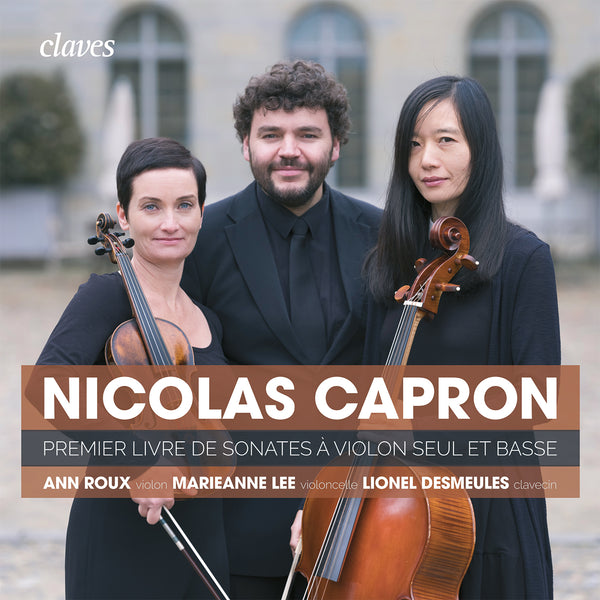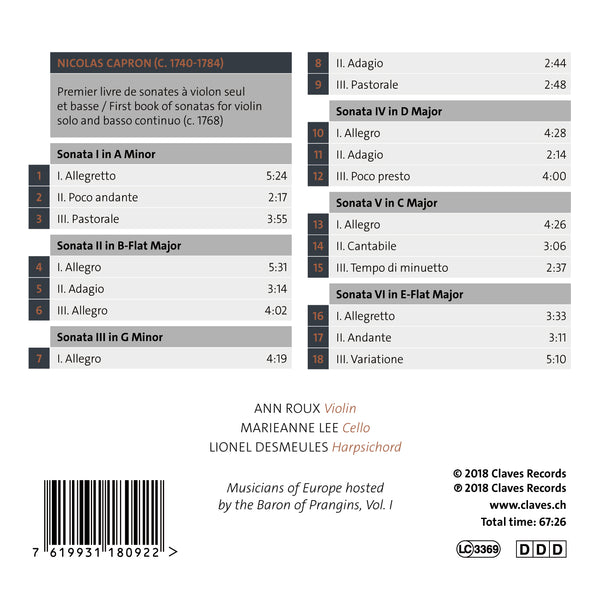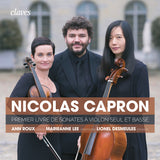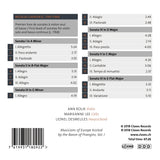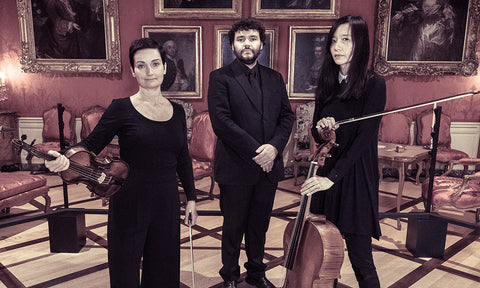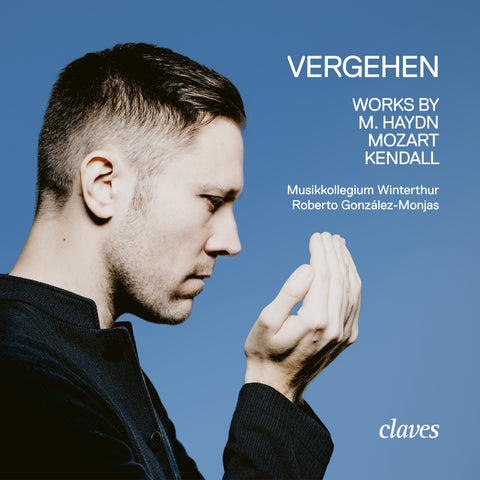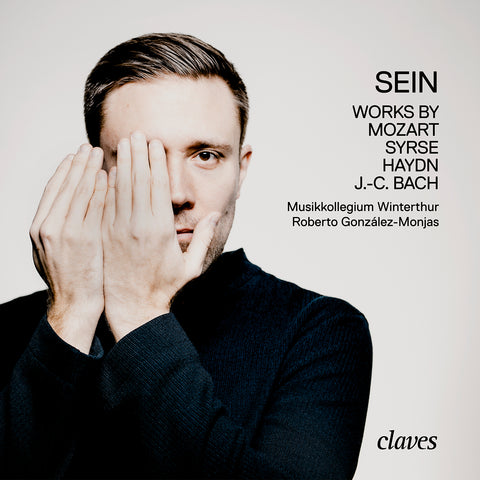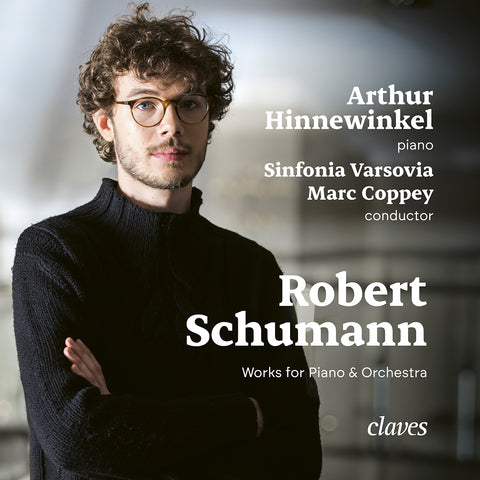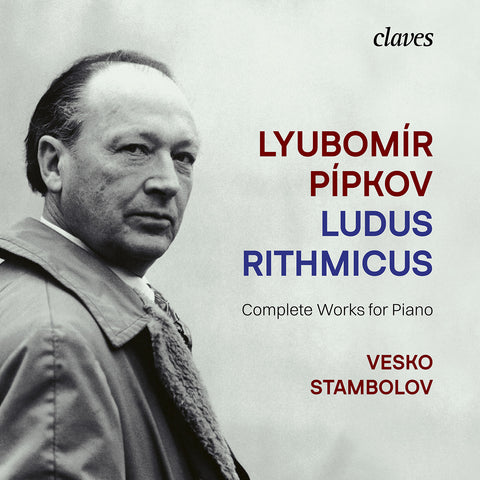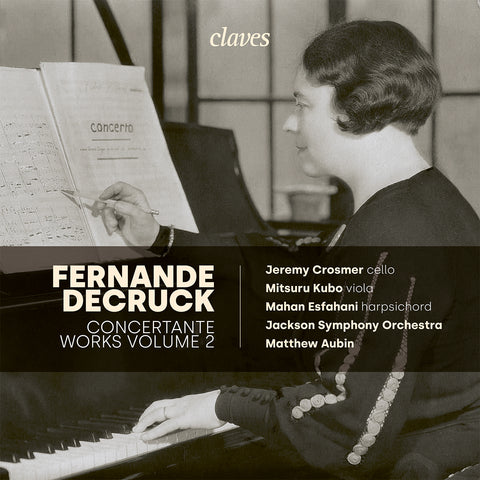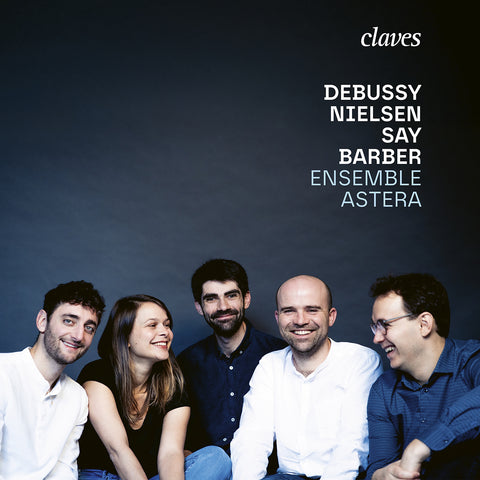(2018) Capron, First book of Sonatas for Violin Solo & Basso Continuo
Category(ies): Ancient music Chamber Rarities
Instrument(s): Cello Harpischord Violin
Main Composer: Nicolas Capron
CD set: 1
Catalog N°:
CD 1809
Release: 25.05.2018
EAN/UPC: 7619931180922
This album is now on repressing. Pre-order it at a special price now.
CHF 18.50
This album is no longer available on CD.
This album has not been released yet. Pre-order it from now.
CHF 18.50
This album is no longer available on CD.
CHF 18.50
VAT included for Switzerland & UE
Free shipping
This album is no longer available on CD.
VAT included for Switzerland & UE
Free shipping
This album is now on repressing. Pre-order it at a special price now.
CHF 18.50
This album is no longer available on CD.
This album has not been released yet.
Pre-order it at a special price now.
CHF 18.50
This album is no longer available on CD.
CHF 18.50
This album is no longer available on CD.
CAPRON, FIRST BOOK OF SONATAS FOR VIOLIN SOLO & BASSO CONTINUO
NICOLAS CAPRON
FIRST BOOK OF SONATAS FOR VIOLIN SOLO & BASSO CONTINUO
MUSICIANS OF EUROPE HOSTED BY THE BARON OF PRANGINS, A RECORDING PROJECT ON PERIOD INSTRUMENTS
Descendant of a prominent family from Buerglen in Thurgau, Louis-François Guiguer, baron of Prangins, was born in Paris on December 1st, 1741 and lived in opulence thanks to the wealth of his great-uncle, the banker Louis Guiguer. From 1753 on he studied at the Collège de Genève, and Voltaire who, awaiting completion of the purchase of the Délices, was a guest of the Guiguer family at Prangins Castle 1, wrote to the young man’s father in February 1755: “I am hearing from various sources that they have never seen a child so precocious for his age” 2. Louis-François Guiguer joined the regiment of the Swiss Guards in 1757 and took part in the Hesse Campaign three years later. When his father died in February 1770, he inherited the Barony of Prangins, largest noble property of the Pays de Vaud, which included the villages and territories of Prangins, Bénex, Gland, Vich, Promenthoux and extended to the Dullive river.
Taking possession of his domain in the spring of 1771, Louis-François Guiguer wrote the first words of his Journal : “Arrived in Prangins” 3, and continued writing it until his death in 1786, first with his steward and friend Christophe-Daniel Renz, a lawyer from Tübingen and virtuoso harpsichordist, then with his spouse Matilda Clevland. The thousand odd pages of this Journal record the life of a lordship associated to the high society of La Côte and Geneva at the end of the Old Regime, daily life in which music playing was present in all its various forms.
Our curiosity is piqued by the presence of composer-musicians hosted by the Baron in Prangins Castle, nowadays Musée national suisse – château de Prangins. Their names, revered in those times, have since been forgotten; their works having been acclaimed by the well-informed public to whom they were destined, our wish is to lift a corner of the veil of the “small history of music” with this recording project and bring these compositions, which were part of Louis-François Guiguer’s musical world, back to life, with due respect and a historically informed interpretation.
NICOLAS CAPRON (C. 1740 – PARIS 1784)
A contemporary of Louis-François Guiguer, son of a King’s Officer and violinist in Paris, Nicolas Capron was considered one of the most brilliant pupils of Pierre Gaviniès, who had apparently himself received advice from Jean-Marie Leclair 4. This possible filiation is illustrated in the eulogy to the memory of the latter by Monsieur du Rozoi in the November 1764 edition of the Mercure: “if France has Gaviniés and Caprons, it is thanks to his works” 5. Nicolas Capron undoubtedly holds a very special place among the great French violonists.
In 1752, when the “War of the Buffoons” broke out, the presence of the young Capron is noted in the Comic Opera Orchestra of the Foires Saint-Germain and Saint-Laurent 6. This show, genuine troublemaker of the Parisian scene, had cast such a shadow on the Italian Comedy and the Royal Academy of Music with its insolent success, that it had been shut down between 1745 and 1751. Nicolas Capron probably had the opportunity to familiarize himself there with comic pieces as well as the music that Egidio Romualdo Duni, François-André Danican Philidor or Pierre-Alexandre Monsigny wrote for plays by Charles-Simon Favart or Michel-Jean Sédaine, to name but the most well-known authors. Capron was also symphony musician with Le Riche de La Pouplinière, very rich patron who had been “advocate successively of French music, then of Italian music, the recognised protector of the German symphony writers” 7. The instrumental ensemble of the farmer-general was one of the capital’s best, and reputedly avant-garde. Conducted by Jean-Philippe Rameau for a long time, after the Buffoons episode it was handed over to Johann Stamitz and later François-Joseph Gossec. According to the 1763 Etat, it comprised of five violins, a cello, a double bass, a flute, an oboe, two clarinets, a bassoon, two horns, two harps and a harpsichord 8.
1762: the year of the fusion of the Comic Opera and the Italian Comedy, the year of the death of La Pouplinière, the year of Capron’s admission to the Concert Spirituel. He started there as principal of the second violins before replacing his master Gaviniès as head of the first violins from 1765 on. We know, according to André-Modeste Grétry, that he was “an excellent violin teacher” 9, that he frequented the aristocratic salons of the Baron of Bagge and Abbot Morellet, that he was a member of the Société Académique des Enfants d’Apollon and that he played in the Concert des Amateurs.
His remarkable debut at the Concert Spirituel in November 1761 is greatly praised by the Mercure, which from then on regularly commented on his multiple appearances, commending the quality of his sound, his accuracy, his skill and the boldness of his bowing technique. In a period where virtuoso players were asked “not to make the public of the Concert hostage to the erudite and dextrous exercises that should only be practised in the privy of study” 10, critics attributed him pleasant and varied compositions as well as extreme virtuosity 11.
From December 1778 to December 1780, Nicolas Capron was no longer mentioned in the Mercure. Where was he? For sure, from 11th to 13th April 1779, “Capron, virtuoso violin” 12 was in Prangins.
ANN ROUX, VIOLIN
Of Canadian origin and Swiss adoption, Ann Roux graduated from the Quebec Music Conservatory in Montreal (Violin First Prize unanimously granted by the jury), Lausanne Conservatory (Virtuosity First Prize in Pierre Amoyal’s class), Rotterdam Conservatory (Concert licence in Jean-Jacques Kantorow’s class) and Geneva Conservatory/ University of Music (Concert diploma in Florence Malgoire’s Baroque violin class).
During her training in America and Europe, Ann was coached by masters such as Joseph Gingold, James Buswell, David Cerone, Stefan Gheorghiu, Sandor Vegh, Michel Schwalbé. An independent, versatile musician, she is equally at ease with the modern violin, Baroque violin and viola, as well as the violino piccolo. Her rich and varied career as orchestra player has led her to perform with numerous ensembles throughout Europe, America and Asia, among others as member of the 1989 Eurovision Song Contest orchestra in Lausanne or more recently of Ton Koopman’s Amsterdam Baroque Orchestra.
Ann Roux has always shared her passion for music with the amateur pupils of her violin class in the Conservatoire de l’Ouest Vaudois. Having recently graduated from the University of Geneva with a Masters Degree in musicology, she obtained a post-graduate scholarship from the Arts Faculty for her PHD under the supervision of Professor Brenno Boccadoro: La musique à Prangins au Siècle des Lumières d’après le Journal (1771-1786) de Louis-François Guiguer, baron de Prangins (Music in Prangins during the Age of Enlightenment according to the Diary (1771-1786) of Louis-François Guiguer, baron of Prangins).
(2018) Capron, First book of Sonatas for Violin Solo & Basso Continuo - CD 1809
NICOLAS CAPRON
FIRST BOOK OF SONATAS FOR VIOLIN SOLO & BASSO CONTINUO
MUSICIANS OF EUROPE HOSTED BY THE BARON OF PRANGINS, A RECORDING PROJECT ON PERIOD INSTRUMENTS
Descendant of a prominent family from Buerglen in Thurgau, Louis-François Guiguer, baron of Prangins, was born in Paris on December 1st, 1741 and lived in opulence thanks to the wealth of his great-uncle, the banker Louis Guiguer. From 1753 on he studied at the Collège de Genève, and Voltaire who, awaiting completion of the purchase of the Délices, was a guest of the Guiguer family at Prangins Castle 1, wrote to the young man’s father in February 1755: “I am hearing from various sources that they have never seen a child so precocious for his age” 2. Louis-François Guiguer joined the regiment of the Swiss Guards in 1757 and took part in the Hesse Campaign three years later. When his father died in February 1770, he inherited the Barony of Prangins, largest noble property of the Pays de Vaud, which included the villages and territories of Prangins, Bénex, Gland, Vich, Promenthoux and extended to the Dullive river.
Taking possession of his domain in the spring of 1771, Louis-François Guiguer wrote the first words of his Journal : “Arrived in Prangins” 3, and continued writing it until his death in 1786, first with his steward and friend Christophe-Daniel Renz, a lawyer from Tübingen and virtuoso harpsichordist, then with his spouse Matilda Clevland. The thousand odd pages of this Journal record the life of a lordship associated to the high society of La Côte and Geneva at the end of the Old Regime, daily life in which music playing was present in all its various forms.
Our curiosity is piqued by the presence of composer-musicians hosted by the Baron in Prangins Castle, nowadays Musée national suisse – château de Prangins. Their names, revered in those times, have since been forgotten; their works having been acclaimed by the well-informed public to whom they were destined, our wish is to lift a corner of the veil of the “small history of music” with this recording project and bring these compositions, which were part of Louis-François Guiguer’s musical world, back to life, with due respect and a historically informed interpretation.
NICOLAS CAPRON (C. 1740 – PARIS 1784)
A contemporary of Louis-François Guiguer, son of a King’s Officer and violinist in Paris, Nicolas Capron was considered one of the most brilliant pupils of Pierre Gaviniès, who had apparently himself received advice from Jean-Marie Leclair 4. This possible filiation is illustrated in the eulogy to the memory of the latter by Monsieur du Rozoi in the November 1764 edition of the Mercure: “if France has Gaviniés and Caprons, it is thanks to his works” 5. Nicolas Capron undoubtedly holds a very special place among the great French violonists.
In 1752, when the “War of the Buffoons” broke out, the presence of the young Capron is noted in the Comic Opera Orchestra of the Foires Saint-Germain and Saint-Laurent 6. This show, genuine troublemaker of the Parisian scene, had cast such a shadow on the Italian Comedy and the Royal Academy of Music with its insolent success, that it had been shut down between 1745 and 1751. Nicolas Capron probably had the opportunity to familiarize himself there with comic pieces as well as the music that Egidio Romualdo Duni, François-André Danican Philidor or Pierre-Alexandre Monsigny wrote for plays by Charles-Simon Favart or Michel-Jean Sédaine, to name but the most well-known authors. Capron was also symphony musician with Le Riche de La Pouplinière, very rich patron who had been “advocate successively of French music, then of Italian music, the recognised protector of the German symphony writers” 7. The instrumental ensemble of the farmer-general was one of the capital’s best, and reputedly avant-garde. Conducted by Jean-Philippe Rameau for a long time, after the Buffoons episode it was handed over to Johann Stamitz and later François-Joseph Gossec. According to the 1763 Etat, it comprised of five violins, a cello, a double bass, a flute, an oboe, two clarinets, a bassoon, two horns, two harps and a harpsichord 8.
1762: the year of the fusion of the Comic Opera and the Italian Comedy, the year of the death of La Pouplinière, the year of Capron’s admission to the Concert Spirituel. He started there as principal of the second violins before replacing his master Gaviniès as head of the first violins from 1765 on. We know, according to André-Modeste Grétry, that he was “an excellent violin teacher” 9, that he frequented the aristocratic salons of the Baron of Bagge and Abbot Morellet, that he was a member of the Société Académique des Enfants d’Apollon and that he played in the Concert des Amateurs.
His remarkable debut at the Concert Spirituel in November 1761 is greatly praised by the Mercure, which from then on regularly commented on his multiple appearances, commending the quality of his sound, his accuracy, his skill and the boldness of his bowing technique. In a period where virtuoso players were asked “not to make the public of the Concert hostage to the erudite and dextrous exercises that should only be practised in the privy of study” 10, critics attributed him pleasant and varied compositions as well as extreme virtuosity 11.
From December 1778 to December 1780, Nicolas Capron was no longer mentioned in the Mercure. Where was he? For sure, from 11th to 13th April 1779, “Capron, virtuoso violin” 12 was in Prangins.
ANN ROUX, VIOLIN
Of Canadian origin and Swiss adoption, Ann Roux graduated from the Quebec Music Conservatory in Montreal (Violin First Prize unanimously granted by the jury), Lausanne Conservatory (Virtuosity First Prize in Pierre Amoyal’s class), Rotterdam Conservatory (Concert licence in Jean-Jacques Kantorow’s class) and Geneva Conservatory/ University of Music (Concert diploma in Florence Malgoire’s Baroque violin class).
During her training in America and Europe, Ann was coached by masters such as Joseph Gingold, James Buswell, David Cerone, Stefan Gheorghiu, Sandor Vegh, Michel Schwalbé. An independent, versatile musician, she is equally at ease with the modern violin, Baroque violin and viola, as well as the violino piccolo. Her rich and varied career as orchestra player has led her to perform with numerous ensembles throughout Europe, America and Asia, among others as member of the 1989 Eurovision Song Contest orchestra in Lausanne or more recently of Ton Koopman’s Amsterdam Baroque Orchestra.
Ann Roux has always shared her passion for music with the amateur pupils of her violin class in the Conservatoire de l’Ouest Vaudois. Having recently graduated from the University of Geneva with a Masters Degree in musicology, she obtained a post-graduate scholarship from the Arts Faculty for her PHD under the supervision of Professor Brenno Boccadoro: La musique à Prangins au Siècle des Lumières d’après le Journal (1771-1786) de Louis-François Guiguer, baron de Prangins (Music in Prangins during the Age of Enlightenment according to the Diary (1771-1786) of Louis-François Guiguer, baron of Prangins).
Return to the album | Read the booklet | Composer(s): Nicolas Capron | Main Artist: Ann Roux







